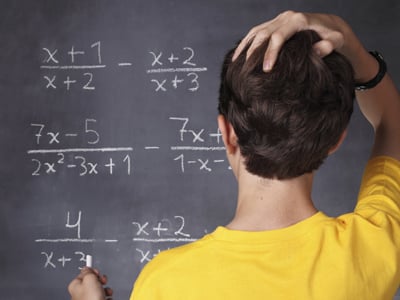
Introduction
Algebra is a tricky subject with an extensive courseload and a broad range of rules and principles. Teaching it to young children can therefore be helpful in allowing them to make progress as they grow older. If taught properly at a young age, students can absorb tougher concepts much better. Using word problems in your h2 math tuition lessons will help students visualize the different concepts. This is a great way to teach them the vast range of signs, letters and rules that make up the study of algebra.
Why use word problems to teach algebra?
The use of word problems helps to develop a child’s:
• logical thinking,
• abstract thinking, and
• mental discipline.
All these aspects are critical to understanding and applying the rules of algebra.
Word problems enable students to:
• identify the key points necessary to solve the question,
• recognize and evaluate the relationship between different objects (say, A and B), and
• translate situations into mathematical expressions by using symbols and letters.
Incorporating world problems into algebra
Algebra can be vastly abstract. To help the students absorb the concepts taught in their h2 math tuition, reinforcement and visualization are key.
1. All those rules!
Algebra comes with a series of very important rules. As a tutor, you need to ensure your students understand the concepts and are able to apply them properly.
By introducing students to ‘algebraic word problems’, you are allowing them to picture the situation at hand and to work through it step by step. This helps them focus on the concepts because, without them, they won’t arrive at the correct answer!
2. Patterns
Part of understanding algebra is seeing patterns, and carefully worded problems can help with this. If the child looks carefully, they should be able to identify fluctuating patterns within the questions. A common word problem involves working out your friend’s age if their brother’s age is given. Encouraging your student to understand the pattern will help them to grasp the basic rules for the future.
3. The basics of algebraic notation
By assigning young children word problems to work through, you are helping them grasp algebraic notation and the rules involved. In algebra, 7a + 10 is not 17a. Children will make such mistakes in the beginning. But visualization will help them grasp the rules and apply common sense, thereby making significant headway in their jc maths tuition.
Solving world problems
You’ll need to guide the child through the ‘thought process’ a few times before they can grasp it. Show them how to identify different situations calling for them to add, subtract, multiply or divide.
Giving them a small ‘guide map’ may help them make quick progress. Show them that problem solving is a process where each statement has a meaning and the whole question makes up a complete picture. On that note, enabling the student to ‘draw out’ the word problem will help them better understand what rules to apply when.
Give them a mental checklist, and explain how to adjust it according to what the question demands. It’s important—and completely okay!—to have a small period of ‘trial and error’ where the students try different rules and see which one works where. They need to understand how to adjust their thought process when attempting to solve a question.
To facilitate the learning process, you can incorporate some useful apps like PhotoMath into your lesson plan. The app breaks down the problem into easy steps and then teaches the student how to solve it step by step. This will help them progress by leaps and bounds!
Steps to solve word problems
Here are a few steps to help your student solve algebra problems:
1. Ask them to read the question and work out what they are required to do!
2. Assign variables to different quantities given in the question. The most common ones are ‘x’ and ‘y’, though they can use any letter in the alphabet.
3. Write out what each variable represents, so that it’s in front of the student at all times.
4. Create an equation using the information given in the question. This will take some time, but practice makes perfect!
5. Tell the student to solve the equation and answer the question. Every word problem will present a scenario for them to evaluate, posing a simple question to guide them along.
6. Ask them to double-check their solution. The answer is wrong if:
• It’s negative. This applies to questions involving time.
• It doesn’t make logical sense. A person can’t run 1000 miles an hour!
• It doesn’t fit into the equation created by the student
Conclusion
Many children struggle with algebra, especially at the early stages. By teaching them to understand the concepts through word problems, you will set a foundation for their future algebraic studies. Make sure your maths tuition sessions are productive for the students by simplifying the concepts so they are easier to comprehend.
